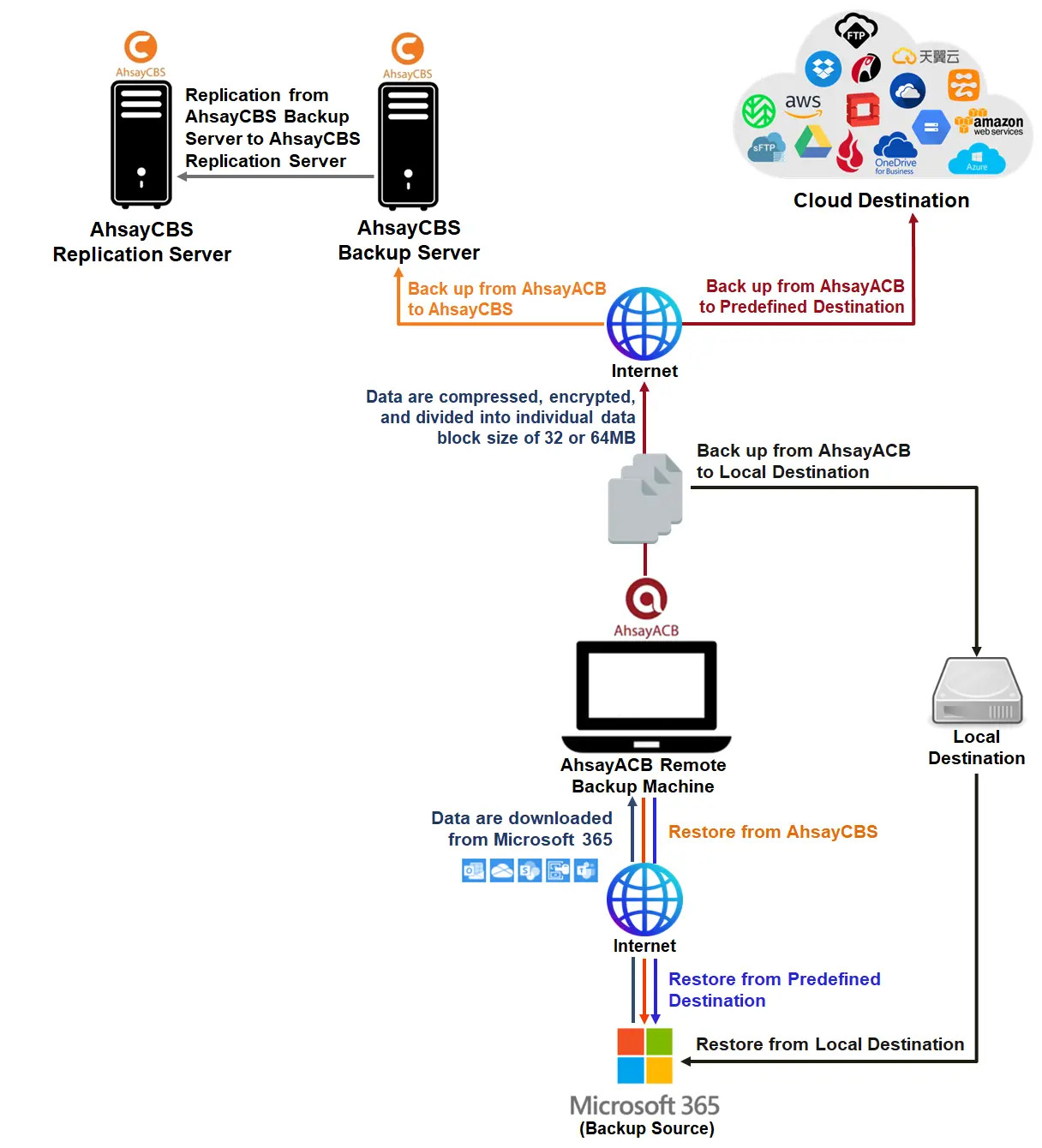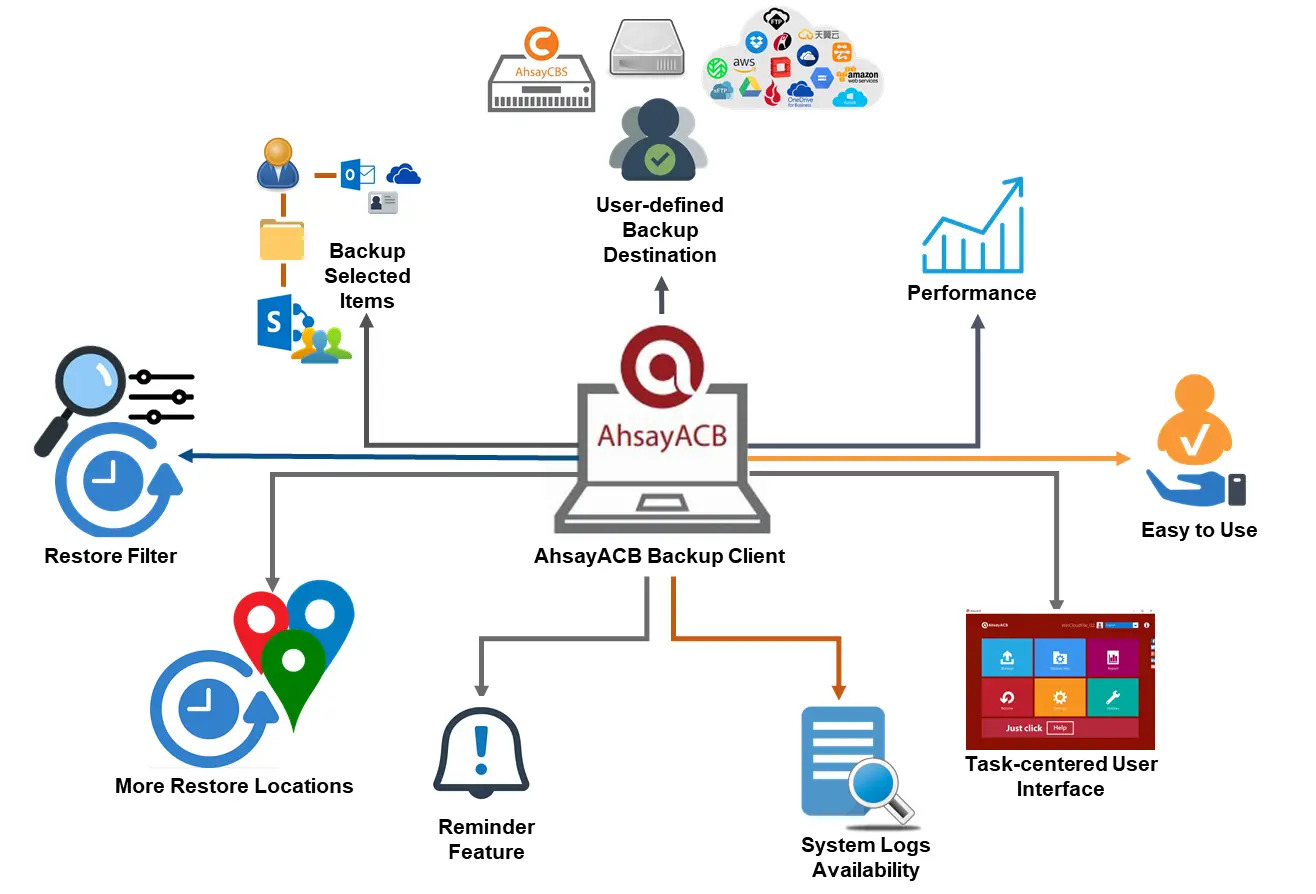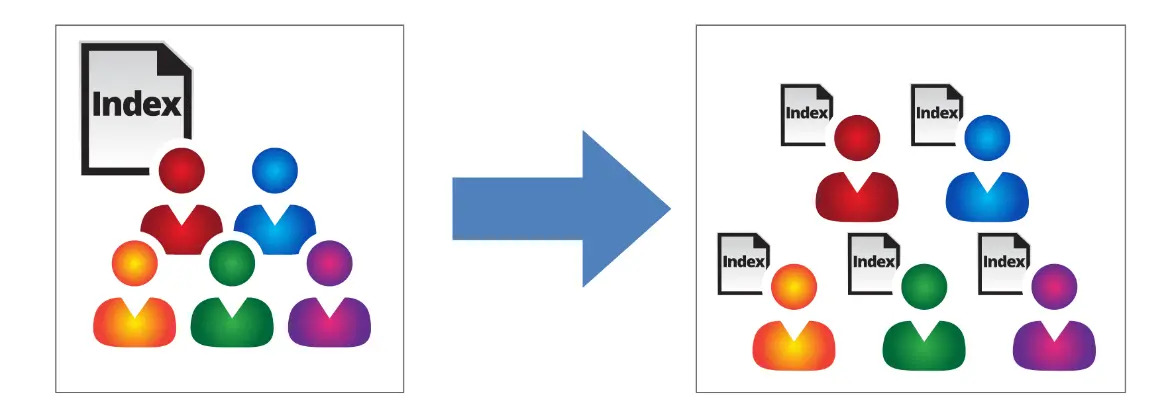Microsoft 365 Backup and Restore on AhsayACB
Microsoft 365 Backup and Restore
Ahsay brings you specialized client backup software, namely AhsayACB, to provide a set of tools to protect your Microsoft 365 user accounts. This includes backup and recovery of individual emails, contacts, calendars, and other mail items in your Microsoft 365 Outlook, files on OneDrive and SharePoint, with snapshots / versioning, and retention policy to protect even items that you may have accidentally deleted from your Microsoft 365 user account.
We recommend that you first read the AhsayACB Overview Guide. This will help you become familiar with the different functions, settings, and features that can be configured in AhsayACB. It will also be helpful to know the different features that can be customized in the backup set before creating one.
There are two kinds of Microsoft 365 backup sets: Run on Client and Run on Server. This guide will mainly focus on how to create a Run on Client M365 backup set on Windows and macOS. Screenshots used for this guide are based on Windows and will include screenshots for macOS when applicable.
This guide will focus on:
- How to create a Microsoft 365 backup set.
- How to run a backup job.
- How to recover emails, contacts, calendars, and files on your Microsoft 365 Outlook / user account, OneDrive, and SharePoint.
- Difference between a Run on Client and Run on Server backup set.
Run on Client (Agent-based) Backup
Below is the system architecture diagram illustrating the major elements involved in the backup process among the Microsoft 365 service, AhsayACB and AhsayCBS.

Run on Client and Run on Server Backup Set Differences
The following table summarizes the differences in backup options available for a Run on Server or Run on Client, and the tool to use (client agent or user web console) when performing a backup and restore:
| Features/Functions | Run on Client Microsoft 365 Backup Set | Run on Server Microsoft 365 Backup Set |
|---|---|---|
| General Settings | ✅ | ✅ |
| Backup Source | ✅ | ✅ |
| Backup Schedule | ✅ | ✅ |
| Destination | AhsayCBS, Predefined Destinations, Standard and Local | AhsayCBS or Predefined Destinations only |
| Multiple Destinations | ✅ | ❌ |
| Deduplication | AhsayOBM | ✅ |
| Retention Policy | ✅ | ✅ |
| Command Line Tool | AhsayOBM | ❌ |
| Reminder | AhsayOBM / AhsayACB for Windows only | ❌ |
| Bandwidth Control | ✅ | ✅ |
| IP Allowed for Restore | ✅ | ❌ |
| System Logs of Data Integrity Check and Space Freeing Up | ✅ | ❌ |
| Others | ✅ | ✅ |
| To Run a Backup | AhsayOBM / AhsayACB | AhsayCBS User Web Console only |
| To Run a Restore | AhsayOBM / AhsayACB / AhsayOBR | AhsayCBS User Web Console only |
Aside from backup options, the table below shows other operations that can be performed using web console and client agent:
| Features/Functions | Run on Client Cloud File Backup Set | Run on Server Cloud File Backup Set |
|---|---|---|
| Data Integrity Check | ✅ | ✅ |
| Space Freeing Up | ✅ | ✅ |
| Delete Backup Data | ✅ | ✅ |
| Decrypt Backup Data | ✅ | ❌ |
For more details on the Run on Server backup option, please refer to the following guide:
Run on Client Key Areas
Ahsay is committed to bringing a comprehensive Microsoft 365 backup solution with AhsayACB. Below are some key areas that can help make the backup experience a better one.

User-Defined Backup Destination
Backup users have more options in assigning a backup destination (i.e. AhsayCBS, Cloud or Predefined destinations, and standard and location destinations).
Performance
Agent-based backup is performed on a physical machine or computer with resources that is dedicated for backup and restore operations. Once the backup client is deployed on the machine, the user has more control on the hardware which affects the overall backup and restore performance.
The Change Key API has significantly improved backup performance for both Full and Incremental backup jobs, which means Microsoft 365 accounts with a large number of items for backup can be completed within hours.
Easy to Use
Agent-based backup solution has a traditional backup approach that is well understood by most administrators and end users who would only need minimal effort and time to understand the backup and/or restore operations.
Task-Centered User Interface
Agent-based backup solution makes it a good option for users to have more control on the individual backup/restore and resources management.
System Logs Availability
System logs for Data Integrity Check and space freeing up results is accessible for end users and can be reviewed anytime. Unlike with the agentless backup where system logs will only be available upon request from the backup service provider.
Reminder Feature
With the agent-based backup, a reminder feature is provided which will display a backup confirmation dialogue box that will prompt users to run a backup job during machine log off, restart, or shut down when enabled.
More Restore Locations
Agent-based backup offers you three (3) restore locations such as the local machine, original location (or the cloud storage where you backed them up), and alternate locations (which is through the same cloud storage but on a different folder).
Flexible restore option: Restore items to the original location or an alternate location.
Restore Filter
Agent-based backup has a restore filter feature which allows users to easily search directories, files, and / or folders to restore.
Fast and Efficient
Backups can be a time and resource consuming process, which is why AhsayACB is designed with advanced technologies to make backup a fast and efficient process.
Users may wish to run backups at a specified time interval of their choice, which is also why we allow you to set your own backup schedules so that you can take full control of the time when to perform a backup.
Multi-threading – this technology utilizes the computing power of multiple CPU cores for creating multiple backup and restore threads to produce fast backup and restore performance.
Backup jobs use a maximum of 4 concurrent threads.

Index File Structure – The index file structure has been re-designed to improve the backup and restore performance.
Each Microsoft 365 user will have its own individual index file instead of a single index file for all users within the backup set.

This new design eliminates any potential I/O performance bottlenecks when the index files are updated during each backup job, which can occur when using single index file structure for multi-thread concurrent backup.
- Block Level Incremental Backup – this technology breaks down the backup files into multiple blocks and only the changed blocks will be backed up each time.
High Level of Security
Your Microsoft 365 users may contain sensitive information that requires them to be protected, which is why your backup data will be encrypted with the highest level of security measures.
- Un-hackable Encryption Key - to provide the best protection of your backup data, you can turn on the encryption feature which will default encrypt the backup data locally with AES 256-bit truly randomized encryption key.
- Encryption key Recovery - a last resort for you to recover your encryption key in case you have lost it. Your backup service provider can make it mandatory for you to upload the encryption key to the centralized management console, the encryption key will be uploaded in hashed format and will only be used when you request for a recovery.
Centralized Management Console
Our enriched features on the centralized web console offers you a one-stop location for monitoring and managing your backup and restore. Below is an overview of what you can do with it. For more details regarding the setup and operations of the centralized management console, refer to the Overview section for details.
- Create / update / delete backup set
- Restore backup set
- Configure user settings
- Configure backup settings
- View and download backup and restore reports
- Monitor backup and restore live activities
- Monitor storage statistic
Cloud Destinations Backup
To offer you with the highest flexibility of backup destination, you can now back up Microsoft 365 user to a wide range of cloud storage destinations. Utilizing cloud destination backup gives you an extra layer of protection in the event of a local drive corruption, where you will still be able to retrieve data from the cloud destination.
Below is a list of supported cloud destinations.
Aliyun |
Microsoft Azure |
CTYun |
Microsoft OneDrive |
Amazon S3 |
Microsoft OneDrive for Business |
AWS S3 Compatible Cloud Storage |
Rackspace |
Wasabi |
OpenStack |
Backblaze |
Dropbox |
Google Cloud Storage |
FTP |
Google Drive |
SFTP |
For more details, please contact your backup service provider.

 How-To
How-To














